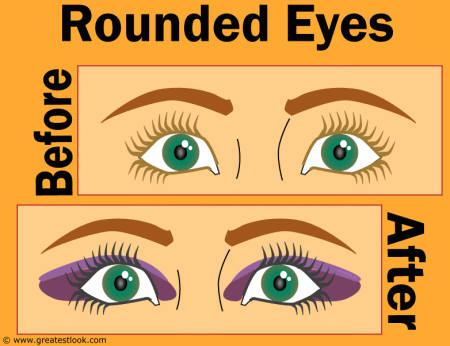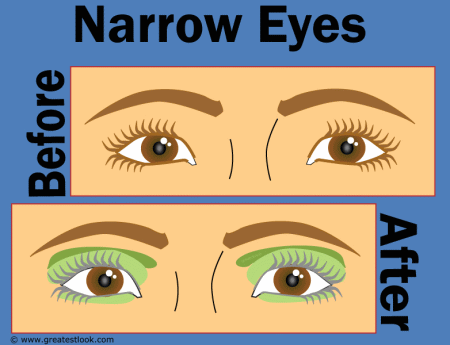How to Use Corrective Make-up for Your Eyes
Previous PageRound Eyes:
Round eyes are generally not a tremendous problem, except that some cases can result in the individual looking “too alert” or the eyes can appear to be bulging. To make the eyes appear wider, try creating contoured areas on both the inside and outside of the eyes, albeit thinner areas than used with the close-set or wide-set eyes.

This will help to create a horizontal focus to the eye, and makes them appear to be wider since the darker contours will appear less prominent. Couple this with a slim band of medium shade eye make-up following the crease of the eyelid. When you blend be sure to use horizontal strokes and keep a focus on width in creating this look.
Furthermore, when and if you use eyeliner, draw a thicker line at the outer and inner corners of the eye. This will help to emphasize the horizontal line of the eye and give the illusion of width.
Narrow eyes present a slightly tougher problem for most people since you have to try to create the appearance that the eyes are larger, and open more widely. This can be tough to do, but the best bet for accomplishing this is to use a light shade of eye color on the upper lid of the eye and extend the color a it beyond the inner and outer corners.

In addition, apply a thin band of the light shade of color on the lower lid just below the lashes of the lower lid.
You also want to be sure to use a lighter mascara and eyeliner color to avoid making the look too dark and defeating the intention. Some women choose to use “white” eyeliner on the inside of the lashes to line the lid and make the eyes appear more open. However, you can use a medium shade of eyeliner on the outside of the lashes and use a light mascara to create an eye-opening effect.
One thing which I encourage everyone to do when you want to start “corrective” makeup applications, is to sit down a few times and practice the appropriate techniques. Practice will help you get comfortable with blending and creating a flattering look using techniques that may be unfamiliar to you.
Furthermore, try practicing at different times of the day and under different lighting conditions so that you get a feel for “daytime” application versus “nighttime” make-up. The two looks should be different but will still have the same goal. Daytime make-up is generally lighter and softer, while evening make-up is darker and uses richer colors and more shimmer and sparkle effects.
©Greatestlook.com
See also:
Make-up Q&A
Make-up techniques for the eyes